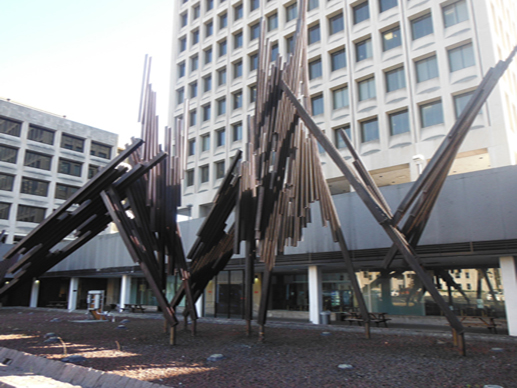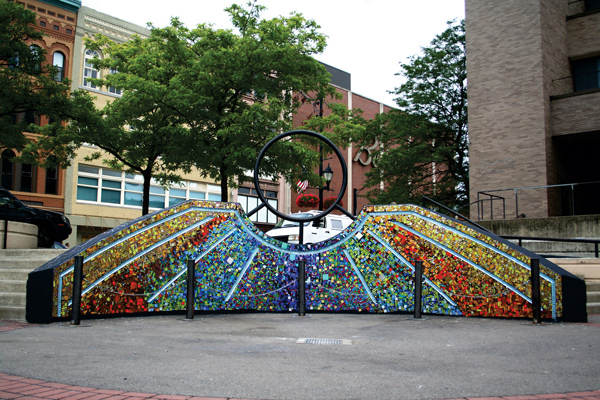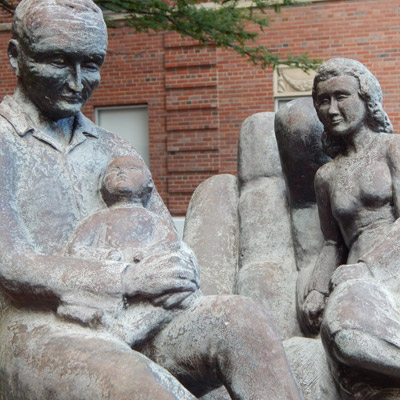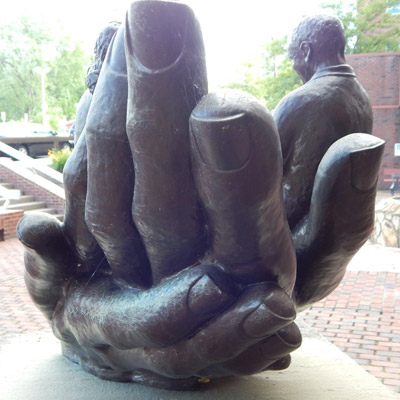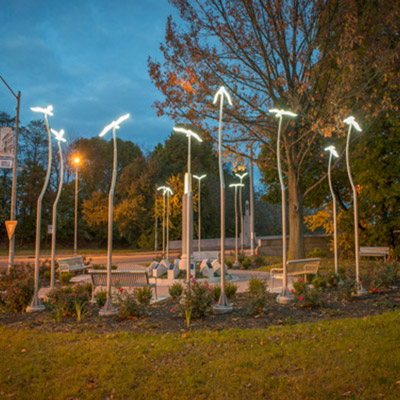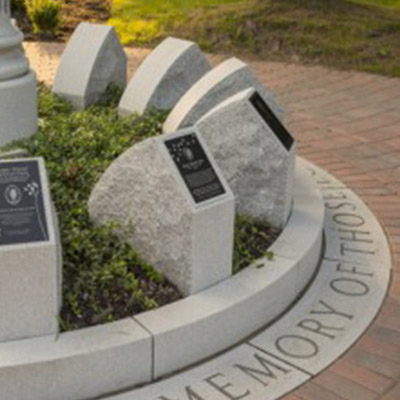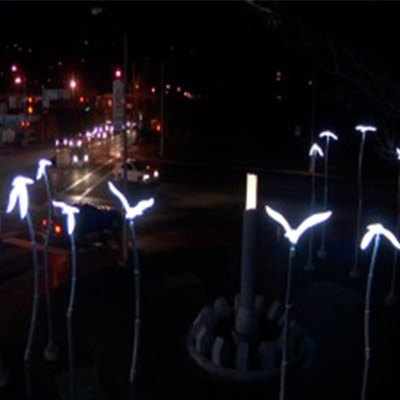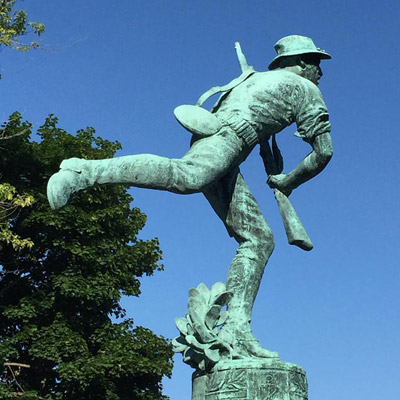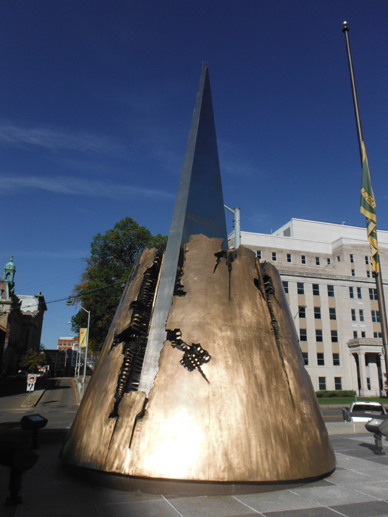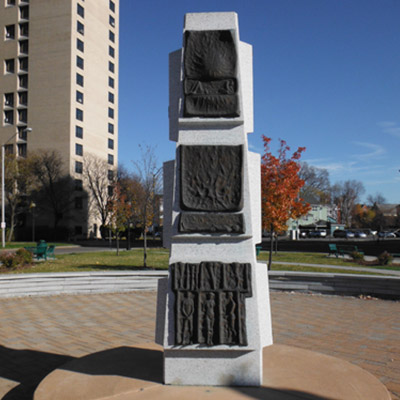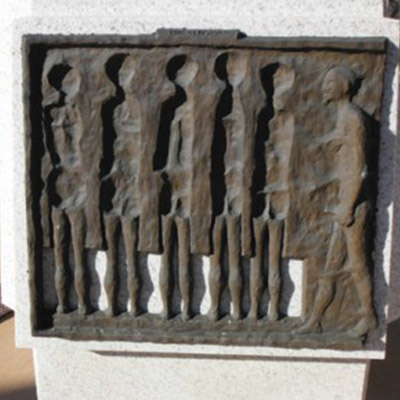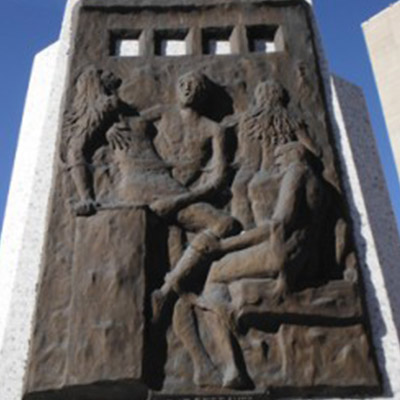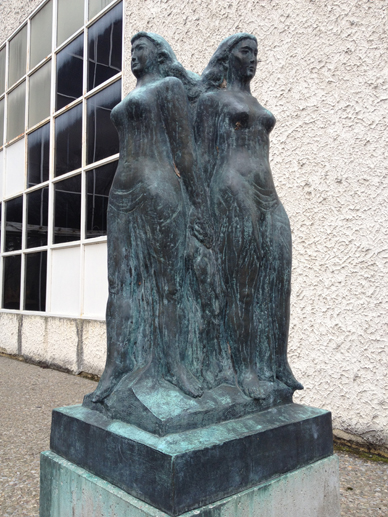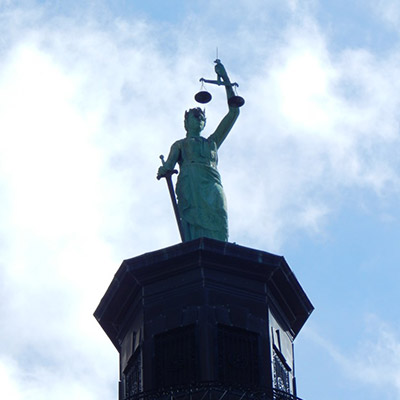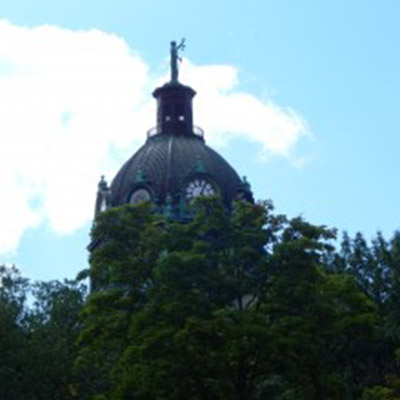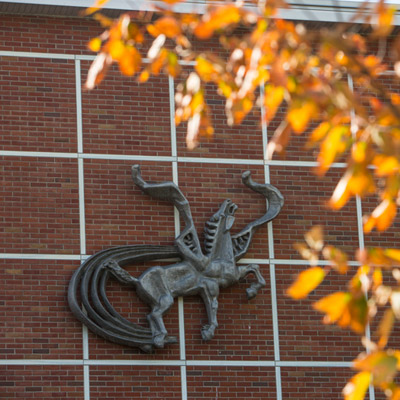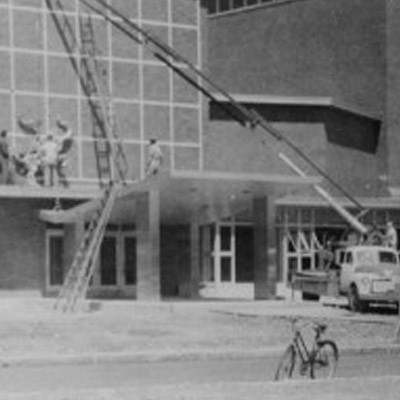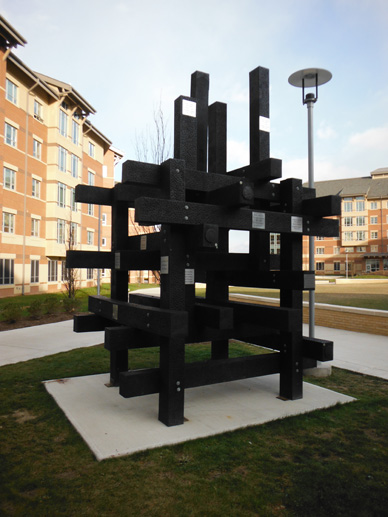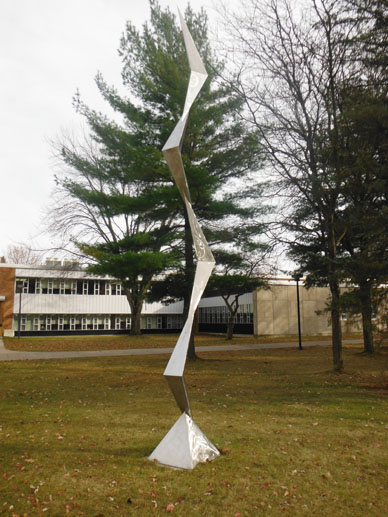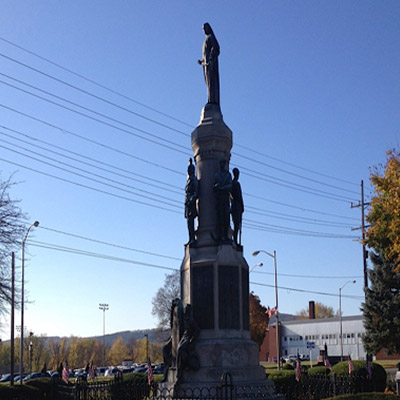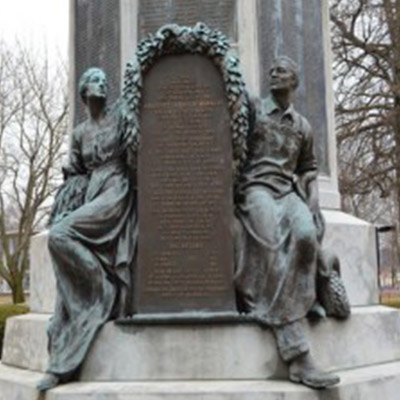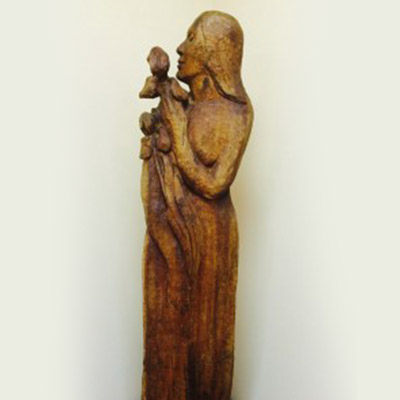“In the act of painting I can take that energy, that inspiration that I feel when I look at those images, and just channel that into the creativity, the quality of my painting. And I have this—this two-channel mind working.”
—Colette Chermak
Colette Chermak (she/her, b. 2001) is an interdisciplinary painter and photographer native to Binghamton, New York. She holds a BFA and an Arts Management minor from the New York State College of Ceramics at Alfred University. Chermak strives to capture the beauty and fragility of nature’s fleeting moments, using her translation of the sublime to confront society’s contributions to wider environmental crises. Her work also reflects on the ever-growing socio-political divisions that perpetuate hostility and fear. Chermak’s senior thesis exhibition and first solo show, Pure Immanence, opened in December 2023. She is the recipient of a 2024 Broome County Arts Council Artist Residency.
Concluding her end-of-residency final exhibition, Slivers, March 2024 BCAC resident artist Colette Chermak sat down with BCAC Marketing Manager Abigail Cornelia to chat about her sources of inspiration and experience within the residency program.
This interview has been sparsely edited for clarity.
AC: Hi Colette. In your artist biography you reference nature, the sublime, time, and the impermanence of it. What happens for you, internally, or on the canvas, when you, as you did with your exhibition Slivers, reconstruct these fleeting moments?
CC: When I go out into the world and collect reference images that become my documentation, my archive, I usually just feel a warm feeling in my chest. This tells me something is important about it [the documented image] and I feel inclined to create, make it an object, make it something that we can interact with other than the vision itself. And it also brings that [experience] to the people. Cause it’s not like I can just easily take a group to this spot [where I took the photo]. It won’t look the same as when I saw it. So, it’s more of an intuitive practice. And I might feel one way about it when I take the photo and then later on when I’m looking through my archive, maybe I don’t feel as inclined to paint that image. It’s just kind of something I go through based on how I feel about it. And what [each image] makes me think of. And it’s also timing, too, that helps.
AC: I think it’s nice you’re having these little moments and you want to share them with people.
CC: Right. And then even on the canvas too, it’s not necessarily about those moments themselves, more in the act of painting I can take that energy, that inspiration that I feel when I look at those images, and just channel that into the creativity, the quality of my painting. And I have this—this two-channel mind working, right? So I have the concept, whatever it is I’m trying to achieve with the work, and then I’m also paying attention to how I’m using technique and challenging myself. I don’t wanna be somebody that pigeon-holes themselves, and just does the same thing over and over again. I just don’t wanna limit myself. The world and everything I see are limitless so, I wanna embody that in my practice too.
AC: Back to Slivers–which piece in the exhibition did you have the most fun making?
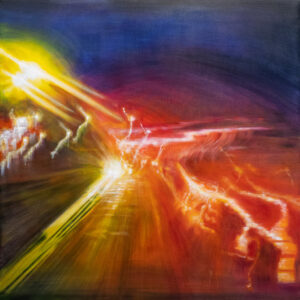
CC: $$$girls night out$$$ was really fun. After painting all these smaller works, it felt really good to get my shoulders and chest open and involved in the painting process. And just making big work is fun. In the beginning it’s a little scary cause there’s more risk involved, right? And it’s harder to restretch that kind of material, it’s just more of an investment. But the outcome was nice, y’know. You just have to stick with it and trust the process. And you can always restart if you need to.
AC: Which piece proved the most challenging, and how do you typically overcome challenges in artmaking?
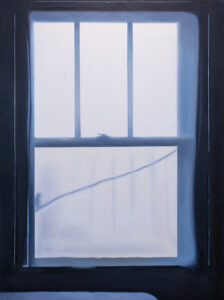
CC: The Greatest, which was the blue window with the really sharp lines, that one took the longest and caused me the most frustration during this process. I was trying something new by using tape to keep it really clean. I’m used to being more interpretive with my brush strokes, but for some reason I felt since my source image was so clean and crisp, I wanted to honor that. I also wanted to honor the way the light was reflecting into the window and off of this plastic sheet, or blind, that was bouncing back onto the window pane. That was the moment that I was looking at originally. And then everything else around it kind of became its own thing. So I wanted to really honor that moment with those two panes coming down.
CC: That painting just took a lot longer than I wanted it to. And it stayed wet the longest. So I just had to wait, be patient. It was looking a little rough, then it got better, and then started looking rough again. I was contemplating quitting it a couple times, and putting it to the side, and I’m very glad I didn’t. That one was the most challenging, for sure.
AC: “Trusting the process,” as corny as the phrase is, it really is true. When things are looking rough you really have to just like, muscle through.
CC: Yes! Because if we don’t at least try to muscle through a couple times, we’ll never accomplish anything beyond what we’re already familiar with. We won’t learn what we’re capable of. We learn more about ourselves and our practice by making something different, right? We have to resist being pigeon-holed.
AC: Exactly. Thank you for chatting with me Colette. I wish you the best of luck in all your future endeavors.
CC: Thank you for having me!
Broome County Arts Council’s Artist Residency program transforms the landscape of possibilities for emerging artists by providing funding, space, tools, and time to create. During a residency, artists have 24/7 access to their own private studio at BCAC, full use of the Digital Art Lab, and receive a $250 stipend to use for supplies and materials, to offset the cost of childcare, or to use however the artist would find most beneficial during their residency month. Each artist will have their own First Friday exhibition in their studio and enjoy the opportunity to sell and show their work through Artisan Gallery. Learn more about BCAC’s Artist in Residence program here: https://broomearts.org/in-the-community/artist-in-residence/




